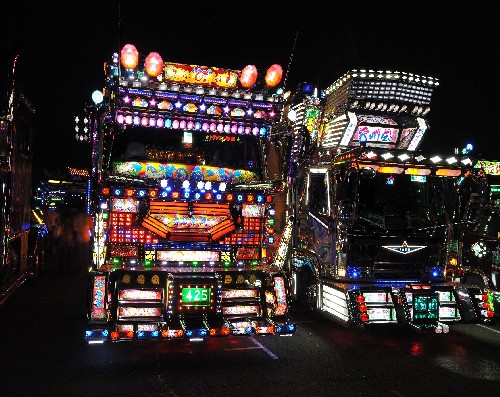Watching trucks has long been my favorite part about long-distance drives. With their size and girth, trucks add spice to the road, and as a keen observer of driving habits, I can’t help but revel in them. In the shadow of professional truck drivers, a regular driver seems like a simple hobbyist. I appreciate their essence, their very truckness.
It’s fascinating to me, then, the way trucks have come to reflect culture norms, shapeshifting across countries and continents. In the vastness of Australia, for example, “road trains” are a common practice in which tractor trailers pull more than two semi-trailers. The road train is a truck on steroids—a much of muchness. Across the outback, these road trains can reach obscene lengths, hauling whatever is needed to far-flung areas of what can understatedly be described as an enormous country. I rarely see them on the East Coast, but I noticed many while traveling in the (also expansive) Western United States this past summer. To see a UPS truck with four semis is to see a brontosaurus on 90-W.
Truckness is often bound up in this muchness, and such is the case in Japan. As with many cultural artifacts, the Japanese have taken the truck and expressed it, enlarged it, raised it to what we might consider an architectural form through the art of dekotora.

Dekotora is a Japanese term meaning “decorated truck.” These are tractor trailers gussied up with chrome fixtures, neon lights, painting, even art that could be likened to murals, spanning across one or more semi-trailers. Dump trucks and garbage trucks get this treatment too. The Japanese originated this art form and style in the 1970s, a decade that saw the emergence of trucking subculture in the mainstream.
Just as Convoy inspired a round of CB radio madness in America, a series of 10 Japanese movies released between 1975 and 1979 known as Torakku Yarō (or Trucker Guys) inspired the dekotora movement. These movies are insane: slapstick and pornographic by turns, but the dekotora truck is, more than the film itself, always the object of artistic expression.
Dekotora trucks are beautiful. They remind me of the Faberge egg, of extremely long and heavily jeweled fingernails, even, yes, they remind me of that outrageous trend from some years ago, vajazzling. This latter comes to mind because dekotora trucks are sexy, in the way that lingerie is sexy, in the way that excess is sexy. Sometimes, only too much is enough.
Dekotora also speaks to the beauty and struggle of being two diametrically opposed things simultaneously. An object as quotidian and, frankly, revolting as a garbage truck is made nearly unrecognizable by dekotora while still remaining a garbage truck. The goal of dekotora, it seems, is not to make a silk purse of a sow’s ear, but to test the limits of function in the face of radical form and transformation. It feels transgressive, in that way that sex can, in the way overtly performing a sexual identity can. When I make love, what am I? Who am I?

The shapeshifting aspects of dekotora are also reminiscent of another Japanese truck phenomenon, the transformers—trucks that are robots. Transformers hint at the innate occultness of being a sexual creature and, moreover, a human. Like these truck-robots, I morph from a person who writes and edits, to someone who scrubs out a birdcage and falls asleep in her clothes, to a creature who engages in sex to, in part, lose all consciousness. And yet, is it a transformation at all? Or do I simply re-arrange, a la Optimus Prime?
Americans know a great deal about muchness, but a very different kind. We favor size, quantity, and largeness, but not the intricacy, the transformation which reveals the complexity of people, truck-robots, dekotora trucks. Americans do not have dekotora trucks because, I suspect, we have a far less keen ability to see two things at once. There beneath the chrome, beneath the strange jutting valances and extra exhaust pipes, the lights and the murals, a dekotora truck is still simply a truck. We can revel in the strangeness of this, like Theseus’ ship, replaced piece by piece: Dekotora shows us the new ship and the old one at once.

The Keep on Truckin’ project is an effort to shine a light on the past, present, and future of the truck-driving industry in America, exploring all facets of our most pivotal, and overlooked, economic engine.




